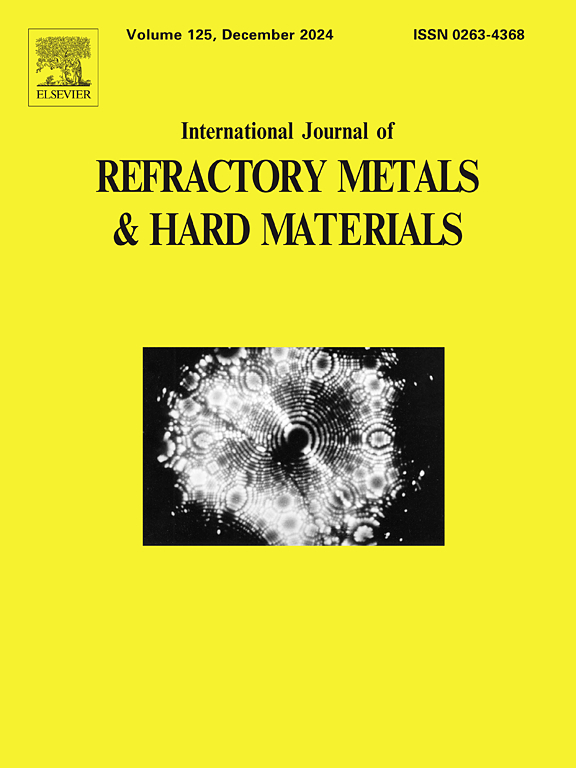Effects of alloying elements (Ti, Zr, Ta, W) on the thermodynamic and elastic properties of HfC at high temperature and high pressure
IF 4.2
2区 材料科学
Q2 MATERIALS SCIENCE, MULTIDISCIPLINARY
International Journal of Refractory Metals & Hard Materials
Pub Date : 2025-01-11
DOI:10.1016/j.ijrmhm.2025.107058
引用次数: 0
Abstract
The effects of alloying elements Ti, Zr, Ta, and W on the thermodynamic and mechanical properties of HfC were investigated at temperatures ranging from 0 to 3000 K and pressures from 0 to 100 GPa using first-principles calculations and quasi-harmonic approximate Debye model. The results show that Ti and W decrease the thermal expansion coefficient of HfC at elevated temperatures, while Ta and Zr increase this coefficient. In terms of melting point, Ti and Zr lower the melting temperature of HfC, whereas Ta and W raise it. All four alloying elements enhance the Debye temperature of HfC at elevated temperatures and higher pressures. Their impact on heat capacity is negligible at high temperatures, but results in a reduction at high pressures. In terms of elastic properties, Zr reduces the elastic modulus of HfC, while Ta and W significantly enhance it. Additionally, at high temperatures, Ti weakens the elastic anisotropy of HfC, while Zr and Ta enhance it; the effect of W is small. At high pressures, however, the influence of the alloying elements on the elastic anisotropy of HfC is relatively weak.
求助全文
约1分钟内获得全文
求助全文
来源期刊
CiteScore
7.00
自引率
13.90%
发文量
236
审稿时长
35 days
期刊介绍:
The International Journal of Refractory Metals and Hard Materials (IJRMHM) publishes original research articles concerned with all aspects of refractory metals and hard materials. Refractory metals are defined as metals with melting points higher than 1800 °C. These are tungsten, molybdenum, chromium, tantalum, niobium, hafnium, and rhenium, as well as many compounds and alloys based thereupon. Hard materials that are included in the scope of this journal are defined as materials with hardness values higher than 1000 kg/mm2, primarily intended for applications as manufacturing tools or wear resistant components in mechanical systems. Thus they encompass carbides, nitrides and borides of metals, and related compounds. A special focus of this journal is put on the family of hardmetals, which is also known as cemented tungsten carbide, and cermets which are based on titanium carbide and carbonitrides with or without a metal binder. Ceramics and superhard materials including diamond and cubic boron nitride may also be accepted provided the subject material is presented as hard materials as defined above.

 求助内容:
求助内容: 应助结果提醒方式:
应助结果提醒方式:


